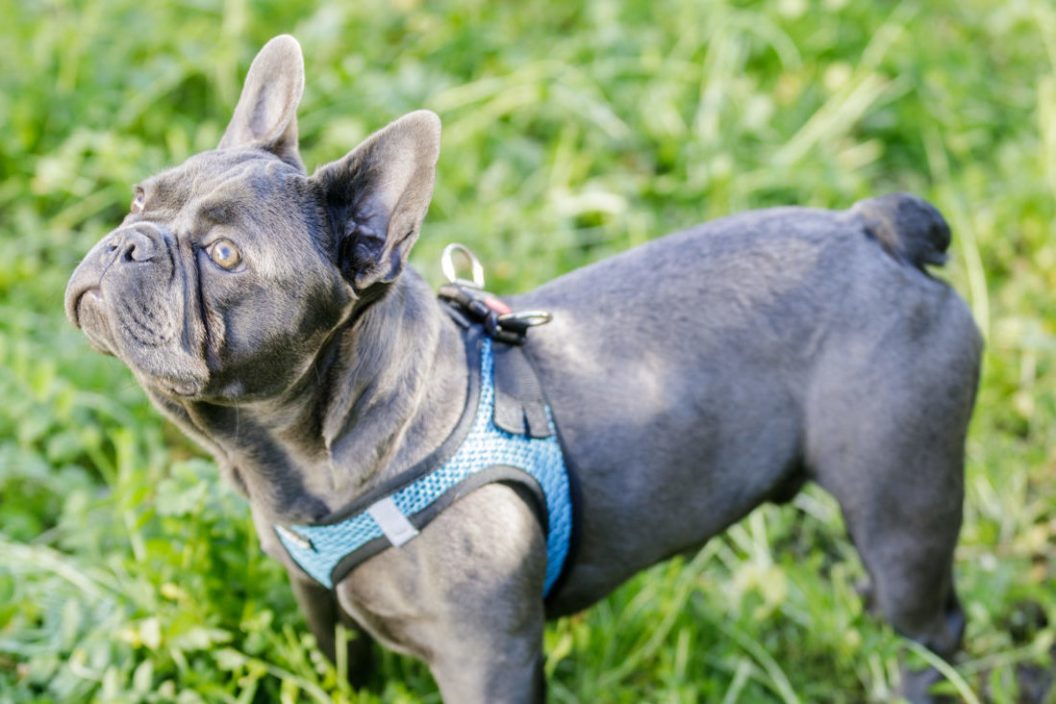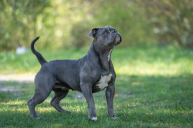Love French bulldogs? Then you'll probably be obsessed with blue French bulldogs. "Frenchies," as fans have fondly dubbed them, are a popular small dog breed with a great personality. You might be used to seeing Labrador retrievers everywhere, but Frenchies are pretty close to labs on the popularity scale. With many people living in small apartments, choosing a smaller dog makes a lot of sense. These pups are a sweet and affectionate breed, with a temperament suited well for family life. They also come in a variety of colors, including brindle, cream, fawn, white, fawn brindle, and, of course, blue.
Anyone looking to compete in an event hosted by the American Kennel Club shouldn't bother with blue Frenchies, as they're not accepted by the AKC breed standard. Despite their lack of an official designation, blue Frenchies still make great pets. Their rare color may be called "blue," but don't expect these pups to look like your favorite pair of suede shoes. The blue color is caused by a recessive gene from the parent dogs and actually has more of a silver or grey pigment, otherwise known as a black dilute gene variation.
Originally, blue French bulldogs were frowned upon because breeders were inbreeding and linebreeding their black Frenchies to create a new, rare color. This type of breeding generally does not produce healthy puppies and can be dangerous because of the potential for genetic defects. These days, however, reputable blue French bulldog breeders produce healthy purebred lines. The stigma remains, but it hasn't put a damper on the demand for this popular dog.
Are you interested in owning a blue French bulldog? Here's everything you need to know about the breed.
How Much Does a Blue French Bulldog Cost?
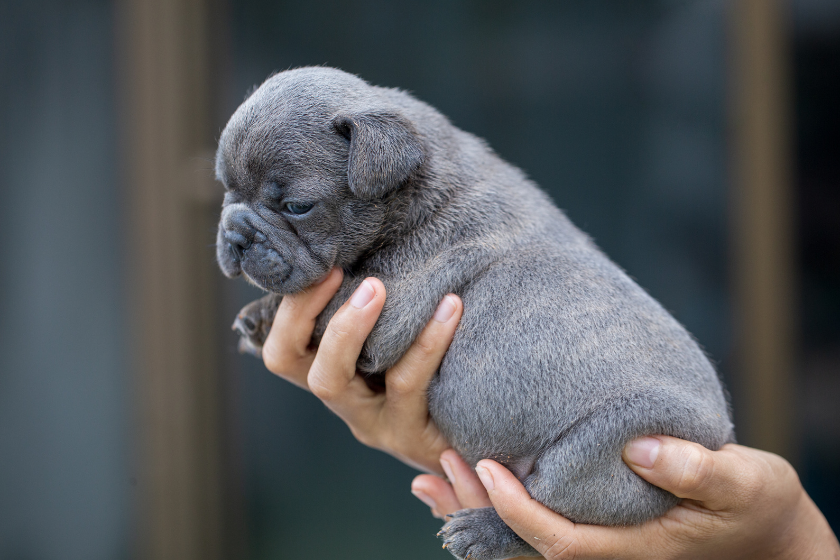
You'll need some pretty deep pockets to add one of these rare dogs to your family. Blue French bulldog puppies can cost between $1,500 and $4,000 in the United States depending on their parents' lineage and color variation. Sometimes, breeders will charge even more! Because blue Frenchies are such a rare color, they typically cost much more than traditional forms of the breed. Still, blue French bulldogs come in many color variations beyond a solid blue coat. Along with their adorable bat ears and blue eyes, their fur can be blue, blue pied, blue brindle, blue fawn, or blue merle. Regardless of their color variation, blue French bulldogs cannot be registered through the AKC since they do not fit the breed standard.
Many expensive purebred dogs end up in shelters, so it may be worth looking into local rescues before you search for a new puppy at a Frenchie breeder. If you do go through a breeder, ask plenty of questions to be sure you've found someone who follows responsible breed practices. You can ask to see where they keep their dogs, which allows you to meet the mother and potentially the father. It's also important to ask to for the parents' registration paperwork and medical clearances before you bring home your puppy to verify their health and pedigree.
Blue French Bulldog Personality and Temperament
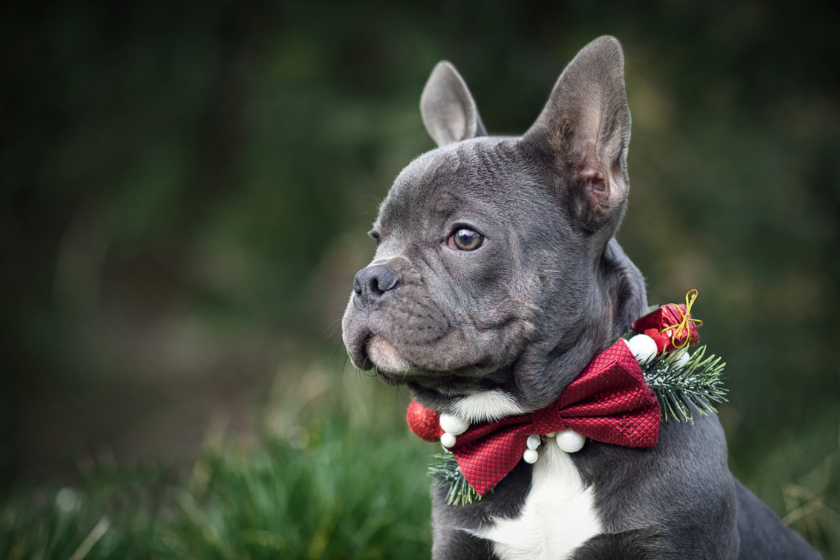
RELATED: Meet Chowder, the Legendary Bulldog Who Can Skateboard Like a Pro
Since blue Frenchies are just a color variation of the original French bulldog, they share all of the same breed characteristics. These pups love to be around people, whether it's their own humans, strangers, or friends. They typically love to cuddle, get along well with other pets, and are great with children.
While French bulldogs are outgoing and love to play, they can also be the perfect couch potatoes. They are not low-energy dogs but are not known for being hyperactive either. A daily stroll around the neighborhood, some fun brain games, and lots of love will keep your Frenchie happy and entertained.
Common Blue French Bulldog Health Problems
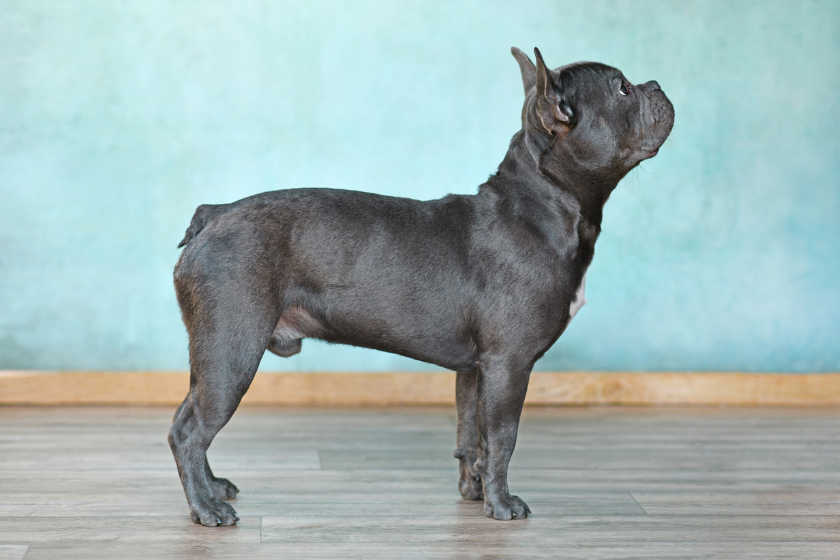
Overall, French bulldogs are low-maintenance dogs. They get short bursts of energy but are considered medium energy dogs overall. They enjoy playing fetch, going for walks, and are eager to learn. Frenchies should eat high-quality dog food that does not add to their weight and owners should be mindful of how many treats they consume for the same reason. Becoming obese can be extremely harmful to their health.
Blue Frenchies have their own unique health problems separate from the standard color variations. They can suffer from color dilution alopecia, which is a rare skin allergy that affects the blue parts of their fur or their entire bodies. They also suffer from skinfold dermatitis, especially in areas that accumulate moisture. Breeders should always screen their patellas, hips, eyes, and run a cardiac exam to look for any genetic defects. Frenchies' ears should be cleaned regularly since they can also suffer from ear infections.
Because they have flat faces, French bulldogs are known as brachycephalic dogs. These breeds are prone to health issues like blocked airways and breathing problems caused by overheating or overexerting. They also snore both while asleep and awake, so be prepared for that! Flat-faced breeds also have a problem with anesthesia, so make sure your vet has experience with breeds with sensitivities if they have to go under for any reason.
French bulldogs are front-heavy, which makes it extremely difficult for them to swim. As with all dogs, always use caution near water and never leave them unattended. They have thinner skin and are more susceptible to drastic temperatures, so they need to be kept warm in the winter and cool in the summer. These dogs do not shed very much and only need to be brushed weekly, but their eyes and ears need to be checked frequently for any signs of irritation. According to the AKC, French bulldogs have a lifespan of 10 to 12 years—but this can be much shorter if they suffer from health problems.
Fun Facts About Blue French Bulldogs
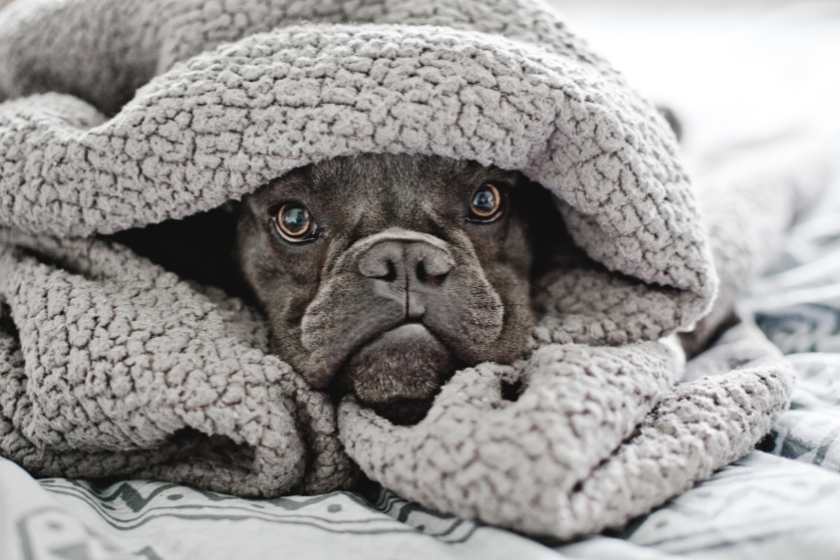
- French Bulldogs are not originally from France! These sweet pups are the cousins of the toy English bulldog and crossed into France with lacemakers during the industrial revolution.
- If you mix a blue and a chocolate French bulldog, you get a lilac French bulldog. This is one of the breed line's rarest variations.
- Due to the shape of their heads, all French bulldog puppies are delivered via c-section.
Do you have a Blue French Bulldog? Show us on our Wide Open Pets Facebook page.
